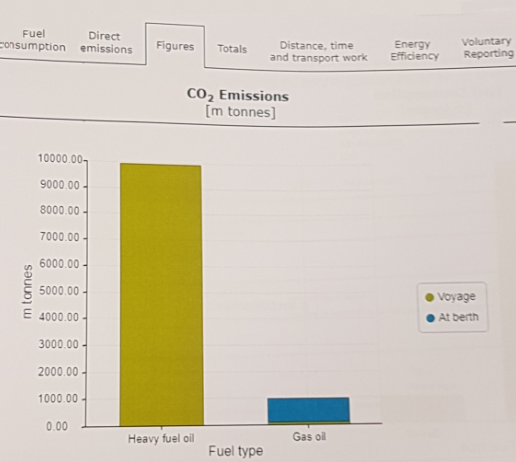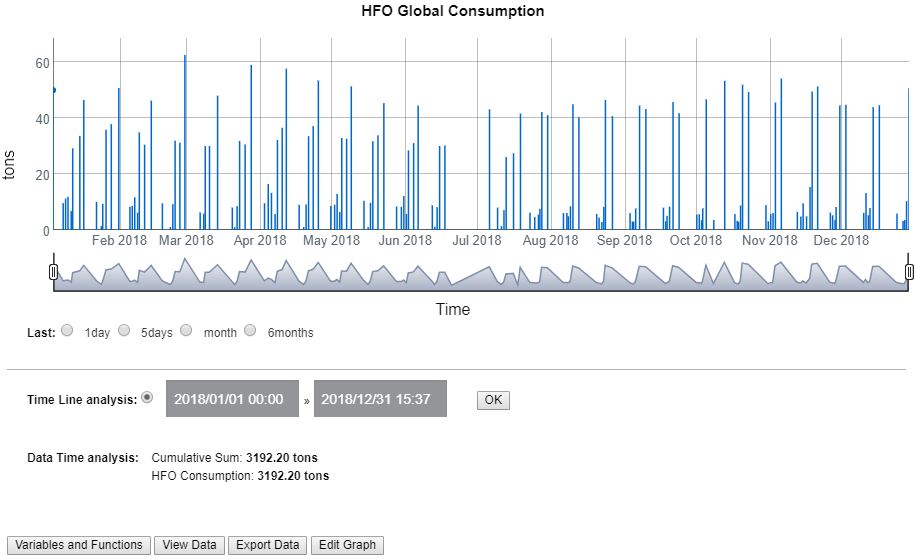MRV – Emissions Report – The Next Deadline is Coming
With the end of the first trimester of 2019, an important milestone for the shipping activity in terms of compliance with EU MRV Regulations will be attained – The Verification of the Vessels’ Emissions Report (ER).
After the assessment of the Monitoring Plan, this comes as the second phase either for the independent verifiers as well as for ship owners.
After one year of monitoring period, in which the company is gathering data about the vessels activity (fuel consumptions by main emission sources on board, CO2 emissions to the atmosphere, miles covered during the voyages, hours at sea cargo carried transport work and vessels’ energy efficiency indicators), an Emissions Report to be verified should be prepared and emitted by an independent entity. Among the verification activity, it should be guaranteed that all vessels procedures conform to the assessed monitoring plan and, consequently, to the EU MRV Regulations. The data submitted in the Emissions Report should be fairly stated and free from material misstatements.
MRV – Emissions Report
Until the 30th April 2019, the company must send to the European Commission (EC) and Flag State Authorities, an Emissions Report satisfactorily verified. The proof that the report has been successfully completed is guaranteed by the issue of a Document of Compliance. This document, which has a validity of 18 months, must be carried on board for the activities of the preceding calendar year. Companies must fulfil this obligation in order to avoid penalties, which can go up to a harsh expulsion of the vessel from ports of the European Community (banned from entering EU ports of call).
The verification activity can be seen as an interactive process that aims to continuously improve the vessels’ MRV management and control systems. Verification involves a two-step approach.
In a first step, analysis of the design and implementations made to the vessel’s in terms of MRV management systems (organization, procedures, IT systems) and control systems. Risk areas should be identified and procedures should be check if they are in assessment and conformity with the Monitoring Plan and EU MRV Regulation.
Extensive testing and analysis of fuel data must be made as well as to other relevant information. Verifiers must evaluate the Emissions Report, verify the credibility of the data, and compare the estimates based on the vessels location data and its onboard characteristics (perform rigorous tests of data tracing to the origin, crosschecking of data and recalculations), as well as identify and evaluate the risks related to the ship activity (inherent, calculations, controls and detection).

Figure 1 – THETIS MRV Platform
Based on the requested information, the verifier elaborates a verification plan that comprises a verification program (should describe the nature and scope of activity, type of activities to be performed during verification and its extension) and a sampling plan (describing the sampling methods). In order to execute the verification plan, the verifier can enquiry the vessel’s competent staff, do a documental inspection and visit the vessel. Under verification must be the equipment which represents sources of emissions used on board, communicated voyage data, the consistency between reported aggregated data and data from relevant documentation or primary sources, the coherence between aggregated fuel consumption and the data on purchased fuel (BDN) and the reliability, accuracy and materiality of the information. This process is carried out in a platform created by EMSA, THETIS MRV (Figure 1).
Tools for Data Management
Besides the ship particulars, the ER comprises the identification of the measuring equipment used onboard, emission sources, annual monitoring results of the vessel (description of fuel consumption, direct emissions, totals within the reporting period – fuel consumption and CO2 emissions), data concerning distance, time and transport work, and energy efficiency data (values of fuel consumption per distance or per transport work and CO2 emissions per distance or per transport work).
The platform allows displaying the results in a graphical form for a more direct appreciation (Figure 2).
Since there are a lot of data for analysis, the shipowners through specialized tools can more easily manage the data, in order to control its variations and take the proper actions at the right time. This will enable the ship operators to have a more accurate knowledge of the vessels behaviour and how they can have increased their energy efficiency.

Figure 2 – Graphs that can be developed by THETIS with vessel’s info.

Figure 3 – BOEM-S layout
One of such tools is BOEM-S (Blue Overall Energy Monitoring System), developed by TecnoVeritas Engineering team.
This platform allows the user to register, monitor and export important KPI from the vessel/fleet activity, as well as to perform reports in real time. It comprises several modules such as Technical Management, Voyage Optimization, Maintenance Management Crew Management and Reports & Documents. It is most certainly a valuable asset for shipowners in the performance of their duty towards the European Commission and Flag State, for Greenhouse Gases monitoring and reporting.



